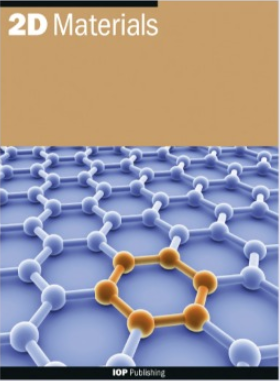摩尔陷双复电子的光学特征
IF 4.5
3区 材料科学
Q2 MATERIALS SCIENCE, MULTIDISCIPLINARY
引用次数: 0
摘要
由扭曲的过渡金属二卤化物形成的原子级薄异质结构可用于创建周期性摩尔纹。新出现的摩尔势可以将层间激子捕获到强相互作用玻色子阵列中,从而形成研究强相关多体态的独特平台。为了创造和操纵这些奇异的物质相,从微观上了解激子-激子相互作用及其在这些系统中的表现就变得不可或缺。最近的密度依赖性光致发光(PL)测量揭示了新的光谱特征,表明被困多激子态的形成提供了有关相互作用强度的重要信息。在这项工作中,我们开发了一种微观理论来模拟受困多激子复合物的光致发光光谱,重点是莫伊里受困单激子和双激子的发射。根据激子哈密顿方程,我们确定了受困双外显子的特性与扭转角的函数关系,并利用这些见解预测了不同密度下莫伊里激子的发光光谱。我们展示了如何利用激发态跃迁产生的侧峰和寿命分析作为莫埃困住的双电子子的指标,并提供有关激子相互作用强度的重要信息。本文章由计算机程序翻译,如有差异,请以英文原文为准。
Optical signatures of moiré trapped biexcitons
Atomically thin heterostructures formed by twisted transition metal dichalcogenides can be used to create periodic moiré patterns. The emerging moiré potential can trap interlayer excitons into arrays of strongly interacting bosons, which form a unique platform to study strongly correlated many-body states. In order to create and manipulate these exotic phases of matter, a microscopic understanding of exciton–exciton interactions and their manifestation in these systems becomes indispensable. Recent density-dependent photoluminescence (PL) measurements have revealed novel spectral features indicating the formation of trapped multi-exciton states providing important information about the interaction strength. In this work, we develop a microscopic theory to model the PL spectrum of trapped multi-exciton complexes focusing on the emission from moiré trapped single- and biexcitons. Based on an excitonic Hamiltonian we determine the properties of trapped biexcitons as function of twist angle and use these insights to predict the luminescence spectrum of moiré excitons for different densities. We demonstrate how side peaks resulting from transitions to excited states and a life time analysis can be utilized as indicators for moiré trapped biexcitons and provide crucial information about the excitonic interaction strength.
求助全文
通过发布文献求助,成功后即可免费获取论文全文。
去求助
来源期刊

2D Materials
MATERIALS SCIENCE, MULTIDISCIPLINARY-
CiteScore
10.70
自引率
5.50%
发文量
138
审稿时长
1.5 months
期刊介绍:
2D Materials is a multidisciplinary, electronic-only journal devoted to publishing fundamental and applied research of the highest quality and impact covering all aspects of graphene and related two-dimensional materials.
 求助内容:
求助内容: 应助结果提醒方式:
应助结果提醒方式:


